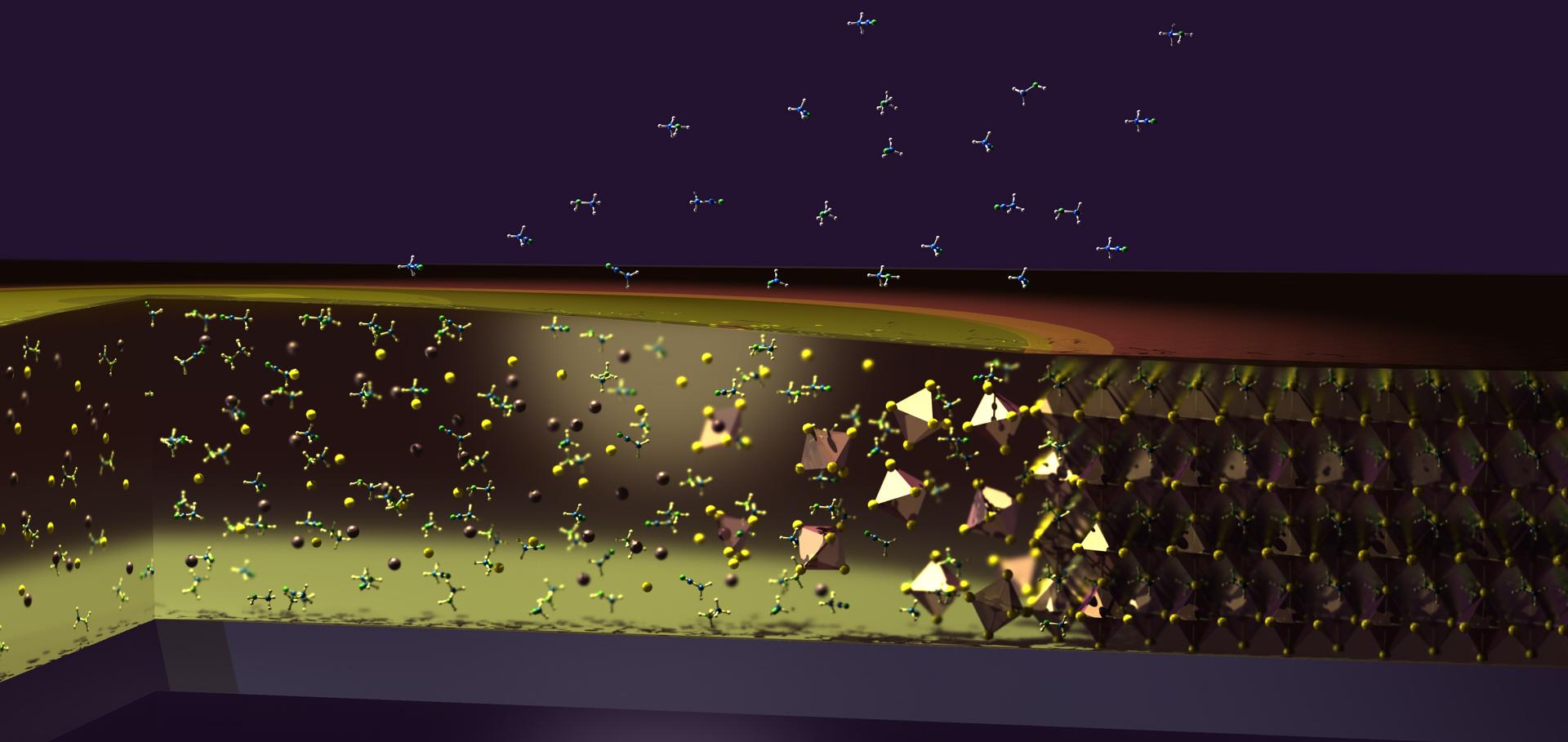Enhanced optoelectronic quality of perovskite thin films with hypophosphorous acid for planar heterojunction solar cells
(2015)
Abstract:
Solution-processed metal halide perovskite semiconductors, such as CH3NH3PbI3, have exhibited remarkable performance in solar cells, despite having non-negligible density of defect states. A likely candidate is halide vacancies within the perovskite crystals, or the presence of metallic lead, both generated due to the imbalanced I/Pb stoichiometry which could evolve during crystallization. Herein, we show that the addition of hypophosphorous acid (HPA) in the precursor solution can significantly improve the film quality, both electronically and topologically, and enhance the photoluminescence intensity, which leads to more efficient and reproducible photovoltaic devices. We demonstrate that the HPA can reduce the oxidized I2 back into I(-), and our results indicate that this facilitates an improved stoichiometry in the perovskite crystal and a reduced density of metallic lead.Dye Monolayers Used as the Hole Transporting Medium in Dye-Sensitized Solar Cells
Advanced Materials 27:39 (2015) 5889-5894
Abstract:
Dye-sensitized TiO2 can be used as the active layer of solar-cell devices without an additional hole-transporting material. In this architecture, holes are transported through the dye monolayer.Dye Monolayers Used as the Hole Transporting Medium in Dye‐Sensitized Solar Cells
Advanced Materials Wiley 27:39 (2015) 5889-5894
Stability of Metal Halide Perovskite Solar Cells
Advanced Energy Materials Wiley 5:20 (2015)
Atmospheric Influence upon Crystallization and Electronic Disorder and Its Impact on the Photophysical Properties of Organic–Inorganic Perovskite Solar Cells
ACS Nano American Chemical Society (ACS) 9:3 (2015) 2311-2320


